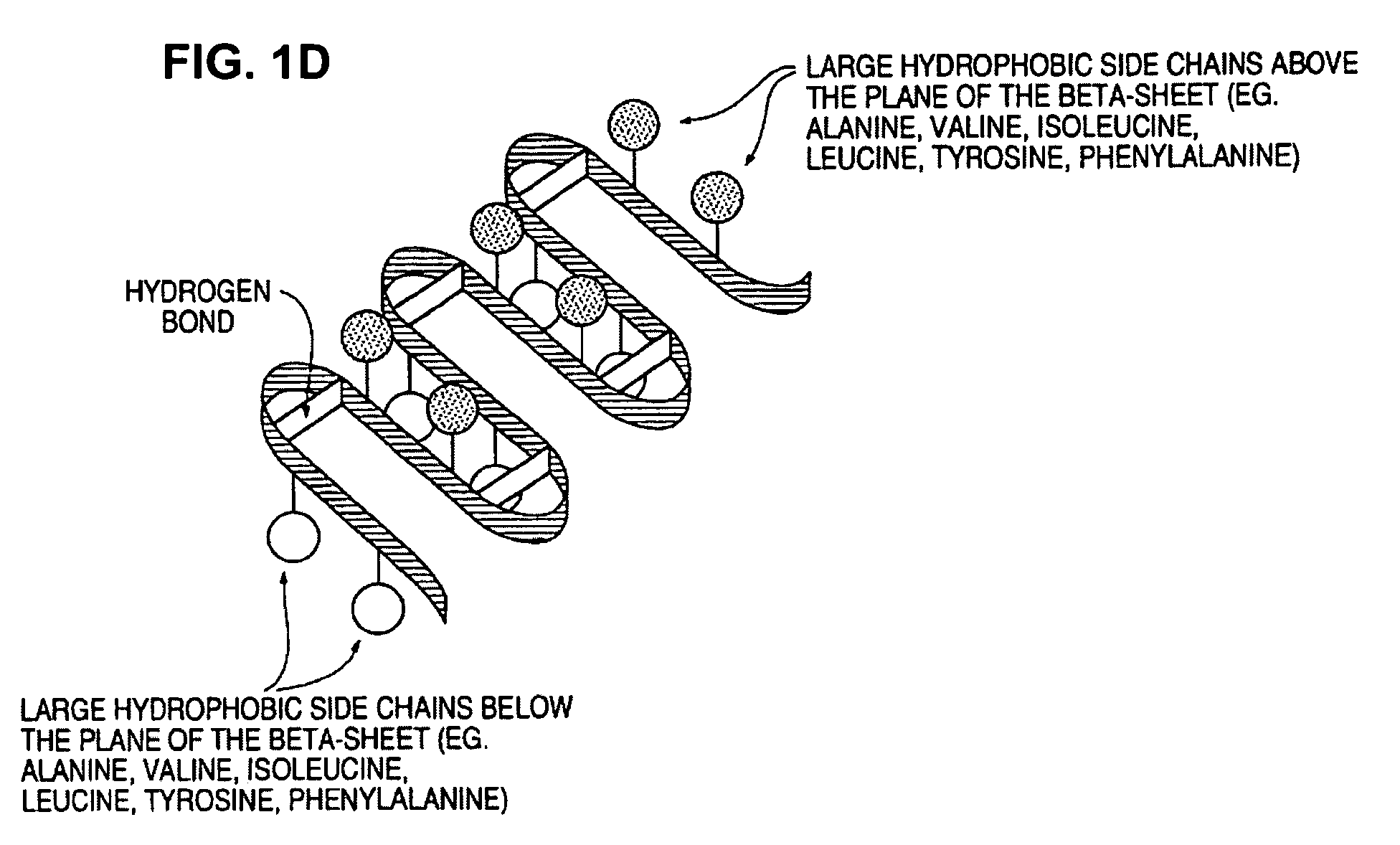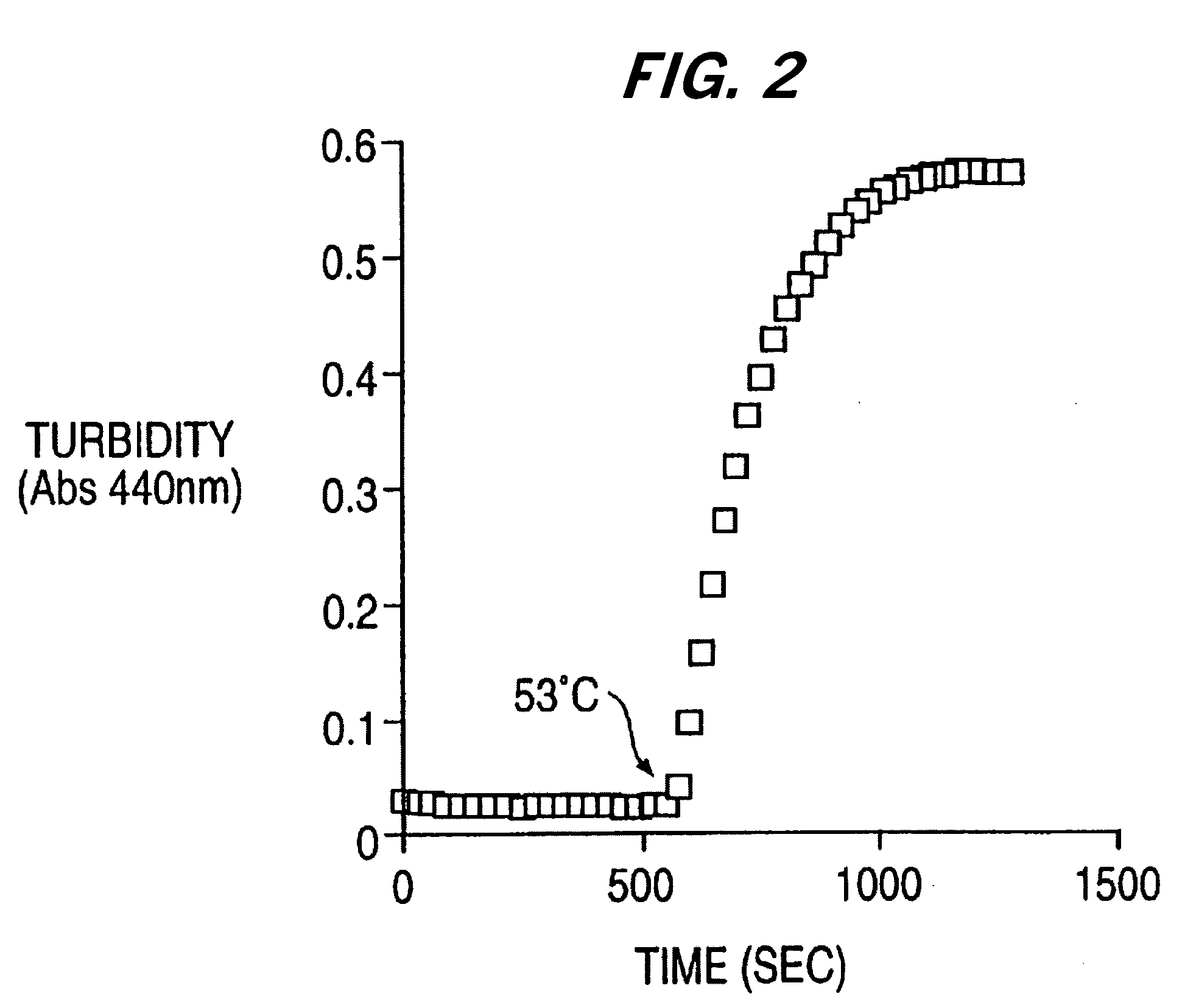Synthetic peptide materials for joint reconstruction, repair and cushioning
a technology of synthetic peptides and materials, applied in the field of synthetic peptide materials, can solve the problems of debilitating back pain, abnormal wear, debilitating disease, etc., and achieve the effects of reducing the risk of fracture, and reducing the number of fractures
- Summary
- Abstract
- Description
- Claims
- Application Information
AI Technical Summary
Benefits of technology
Problems solved by technology
Method used
Image
Examples
example 1
[0106]A pad of synthetic peptide material was fabricated by coacervation of a polypeptide modeled on elastin (MFU-7) from solution at 37° C., followed by centrifugation. In particular, the polypeptide was dissolved to a concentration of 50 mg / ml in 0.15M borate buffer, pH 8.0, in a flat-bottomed container. The solution was adjusted to 0.8 M in NaCl to initiate coacervation. The coacervate was centrifuged at 12,000×g for 15 min at 37° C. Then 500 μl of 10 μM genipin was added and centrifugation at 12,000×g at 37° C. is continued for an additional 30 minutes to form a pad. The material was allowed to mature overnight at 37° C., and then stored in water until use.
[0107]FIG. 6 shows a typical pad prepared in this manner, approximately 3 mm in diameter and 3 mm in thickness.
[0108]To assess resistance to compression and resilience (e.g., compressibility), the pad was subject to compression testing by routine methods using a Biosyntech Mach-1 testing apparatus (Biosyntech Inc., Laval, QC)....
example 2
[0109]A pad of synthetic peptide material was fabricated from a solution of a polypeptide modeled on elastin (MFU-7) using a foaming technique involving crosslinking with lysine-diisocyanate. In particular, the polypeptide was dissolved to 10 mg / ml in DMSO and warmed to 65° C. under nitrogen for 20 minutes. 697 μL of water was added, followed by drop wise addition of 303 μL of lysine-diisocyanate. The sample was mixed and left in room air at 20° C. overnight. The insoluble, crosslinked material was then lyophilized and stored in water until use. In this example, the dimensions of the pad of material is dictated by the container in which the material is made.
The physical properties of the material were assessed as described above in Example 1. Results are set forth in FIGS. 9 (compression testing and resilience) and 10 (elastic modulus and resilience at difference degrees of compression) and in the table below:
% CompressionElastic Modulus (kPa)Resilience (% Energy Loss)20130494022048...
example 3
[0110]Sheets of synthetic peptide material were fabricated by coacervation of a polypeptide modeled on elastin (MFU-7) from solution at 37° C., followed by centrifugation, following the same general procedures as outlined above, but using different crosslinking agents. As shown in the table below, the specific crosslinking agent used impacted the elastic modulus of the material.
CrosslinkerElastic Modulus (kPa)Genipin1434Glyoxal1065Methyglyoxal638PQQ337
[0111]Thus, the selection of a specific crosslinking agent can be used to design materials with target elastic modulus properties.
PUM
| Property | Measurement | Unit |
|---|---|---|
| Electric charge | aaaaa | aaaaa |
| Digital information | aaaaa | aaaaa |
| Pharmaceutically acceptable | aaaaa | aaaaa |
Abstract
Description
Claims
Application Information
 Login to View More
Login to View More - R&D
- Intellectual Property
- Life Sciences
- Materials
- Tech Scout
- Unparalleled Data Quality
- Higher Quality Content
- 60% Fewer Hallucinations
Browse by: Latest US Patents, China's latest patents, Technical Efficacy Thesaurus, Application Domain, Technology Topic, Popular Technical Reports.
© 2025 PatSnap. All rights reserved.Legal|Privacy policy|Modern Slavery Act Transparency Statement|Sitemap|About US| Contact US: help@patsnap.com



